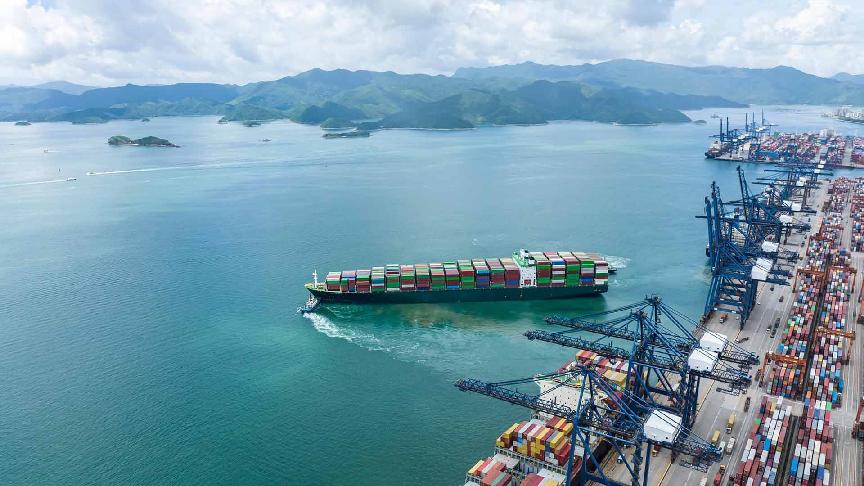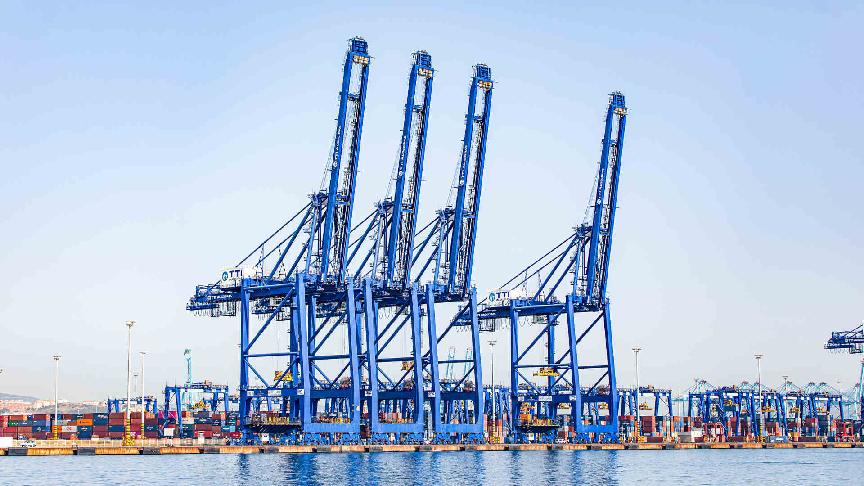8 April 2024 (Lloyd's List) - MAERSK’S APM Terminals is ramping up efforts to boost port efficiency, a critical move that will help ensure schedule reliability as the shipping group prepares for the launch of its new shipping alliance.
Improved productivity at transhipment hubs will maximise throughput across the entire network and build resilience against ongoing disruptions, said the port unit’s Asia and Middle East chief Jonathan Goldner.
The Danish group and Hamburg-based Hapag-Lloyd will start the Gemini Cooperation in February 2025, with the goal of making reliability its competitive edge.
While disruptions caused by the coronavirus pandemic have passed, shocks from industrial action, weather events and other black swans are expected to continue.
If mainline or feeder services within the network are disrupted, for example by congestion at a major gateway port, yard occupancy levels at hub ports will expand rapidly.
Goldner said improving port operational efficiency was a crucial way to alleviate congestion and absorb shocks. He added that APMT, with a global portfolio of 60 operated or invested terminals across 33 countries, had cut vessel stay time by 15-20% over the past two years.
This was achieved by more precise planning at every step from vessel arrival to departure, including reducing waiting time for ships by advance booking of tugs and line handlers.
“So actually, when that last container is loaded, the hatches closed, you can sail right away,” said Goldner.
The application of digitalisation is a key part of boosting efficiency.
APMT has applied digital twin technology at four of its hub terminals — Tangier in Morocco, Salalah in Oman, Algeciras in Spain and Suez Canal Container Terminal in Egypt — with two more to follow this year, according to the company.
The technology uses real-time data, sensor readings and other information to simulate and analyse port operations up to two weeks ahead of vessel arrivals. It lets APMT forecast and fix potential performance problems such as yard congestion, and optimise equipment allocation and resources.
At the same time, new features are being added to meet the needs of automated/semi-automated terminals, import/export and special cargo handling. Users can simulate and test new yard strategies virtually before implementing them in reality.
APMT said it was also optimising its digital tool for berth planning to “maximise connection performance to improve service delivery reliability and potentially also reduce bunker cost”.
More reliable networks also mean Maersk will likely need more self-operated terminals to ensure efficiency and control, while fast-growing Southeast Asia and subcontinent markets provide opportunities.
Goldner, based in Singapore, noted that the supply chain shift away from China, propelled by cost and geopolitics, was reshaping trade flows and spurring economic growth, as well as increasing the demand for infrastructure investment in the receiving countries.
“Given the size of the Chinese market, just a small shift will create massive infrastructure needs in other countries,” he said. “It’s an exciting time to invest.”
APMT’s Asia and Middle East operations span India, Sri Lanka, Thailand, Vietnam, Malaysia, Jordan, Japan and China. Goldner sees China remaining a key manufacturing centre.
The company is also in talks with local port authorities to develop the new Laldia Container Terminal in Bangladesh via a public-private partnership.
“We’ll hopefully negotiate and come to terms around a concession agreement for the terminal,” said Goldner.
“And there are certainly other places we’re actively looking at, which should provide great growth opportunities for the company.”







